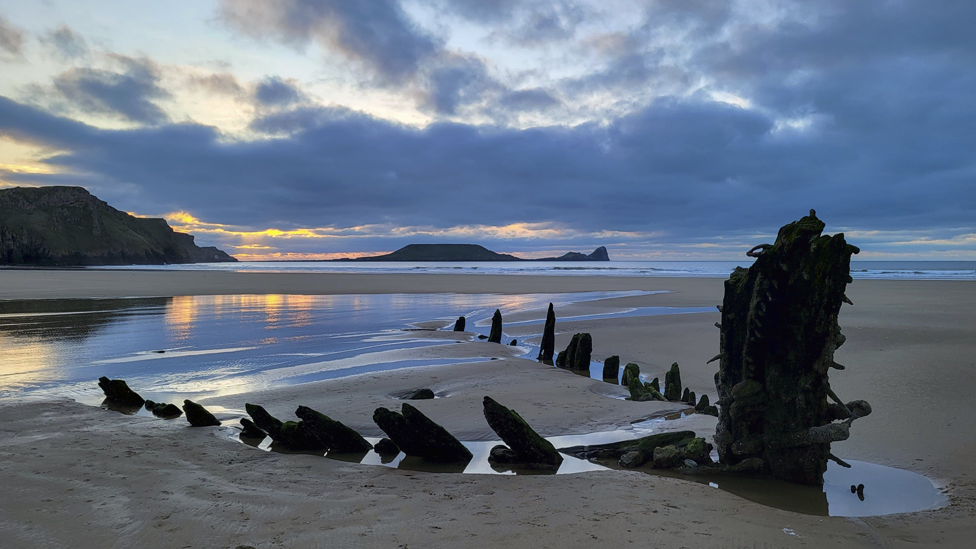Wildfire home scare has owners fearing about future
Rhondda Cynon Taf is one of a number of areas across Wales that have been hit by wildfires
- Published
A couple who watched in fear as a wildfire raced down a mountainside towards their home have said they worry the threat could get worse with climate change.
Fire crews prevented the flames from reaching Alison and Ian Jones' house backing onto the mountain above Treorchy in Rhondda Cynon Taf last month, but the close call has left them wondering how bad it could get.
"The fires in Los Angeles and Spain have been horrendous," Ian said. "We're not on that scale, but who knows what's coming?"
Prof Stefan Doerr, head of Swansea University's Centre for Wildfire Research (CWR), said milder weather in the coming decades means "more fires and longer fire seasons".
A mild winter allowing for more foliage growth followed by spring droughts has made this year particularly bad for wildfires, he added.
Firefighters have had to hold back raging wildfires from properties across Wales this week, with one Ceredigion councillor describing firefighters as being "on their knees".
Mr Jones said they were "concerned every year" because of mountain fires coming down to the edge of Treorchy, but a blaze on 21 March "got a little bit close to the house".
His biggest fear, he said, was for the safety of the firefighters.
Crews 'on their knees' as fire rages for third day
- Published8 April
Climate change made LA fires worse, scientists say
- Published28 January
"They put their lives on the line every time they go up there," said Mr Jones, who decided to fell a tree close his roof after the fire.
"I don't know where the solution is, but we've been here 20-odd years and we have had fires [in the area] every year."
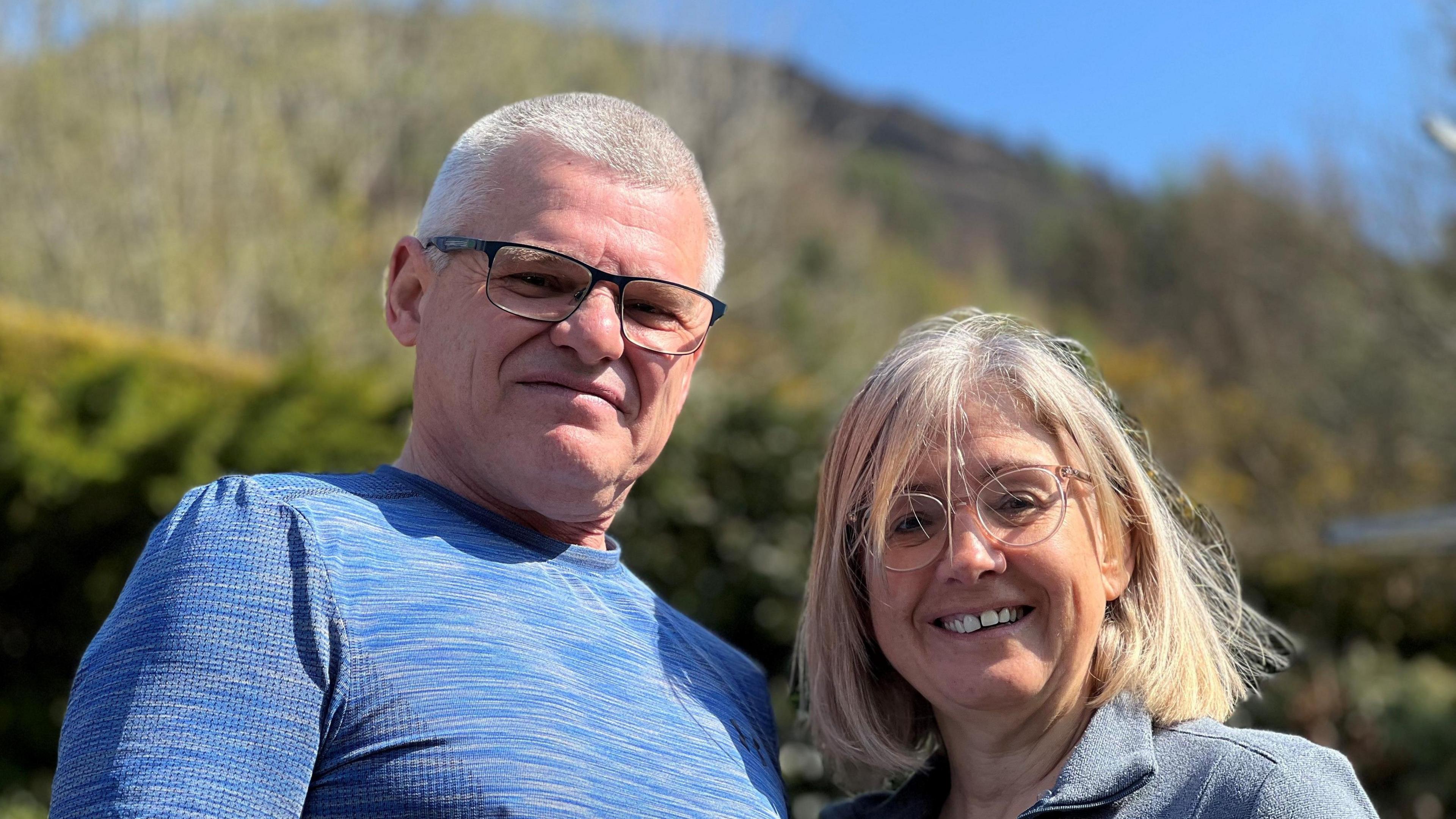
Alison and Ian Jones say they are mountain fires above Treorchy every year
His wife Alison, who was home alone when the flames came close, said she has trust in the system.
"Most of the firemen know the area so well and they know how to manage it."
Wildfires also make crews less able to respond to a property fire or a road crash.
But the workload and danger for fires crews seems to be getting worse.
With no major wildfires in Wales last year, Prof Doerr said the fields and mountains have had "a lot of vegetation growth".
Together with the spring drought it "makes things pretty bad" this year, he added.
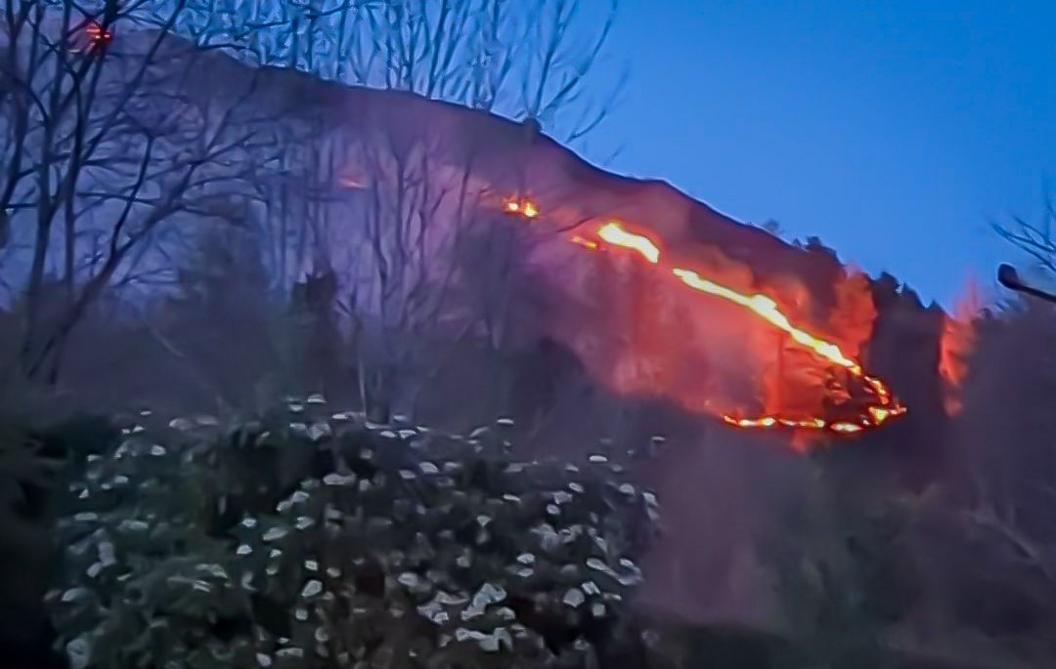
A wildfire in March on the mountain above Alison and Ian's home in Treorchy
Under the current climate change models for Wales, milder winters will mean more foliage to burn, followed by worsening spring droughts.
"Both are likely to become more extreme and these will make it more likely that we'll have more fires and longer fire seasons," he said.
Prof Doerr said a fire risk website, external, developed with South Wales Fire and Rescue Service, lets people check conditions in their area.
But people are more worried about the impact of fires on wildlife than themselves, according to a CWR survey, external.

Garan Thomas is worried about a fire reaching his home
"People tend to be complacent because they think the fire service has things under control," said Rhigos photographer Garan Thomas.
The 27-year-old said he feared a big fire could spread to properties because Rhigos is surrounded by fields.
"My house backs on a rugby pitch and a farm is close, so who is to say the fires wouldn't get in the back garden?"
Smoke from a Rhigos mountain fire hung over the town for more than a week in 2023.
"You wonder if there's enough [firefighting] equipment for this and if South Wales fire service is big enough to cope," he said.
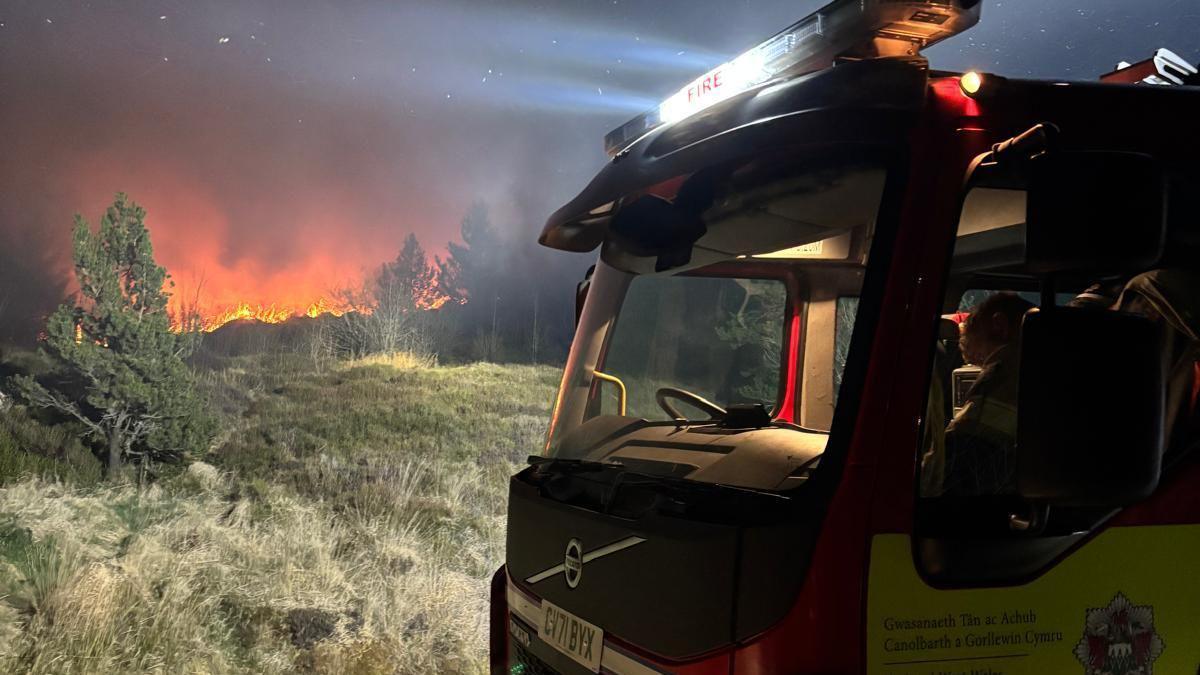
Firefighters battled the Ffair Rhos mountain fire in Ceredigion for days this week
This fire season is different, Mr Thomas added, with fires starting in places not seen before.
"Everyone expects a field or a mountain fire, but the frequency of them this year and the different locations is a bit concerning."
Farmers have been setting controlled fires in the late winter and spring for generations, said Sian Jones, 64, from Crymych in Pembrokeshire.
"When the mountains are plastered in gorse you have cases like California with people going for a picnic and chucking glass and then you've got a problem," she said.
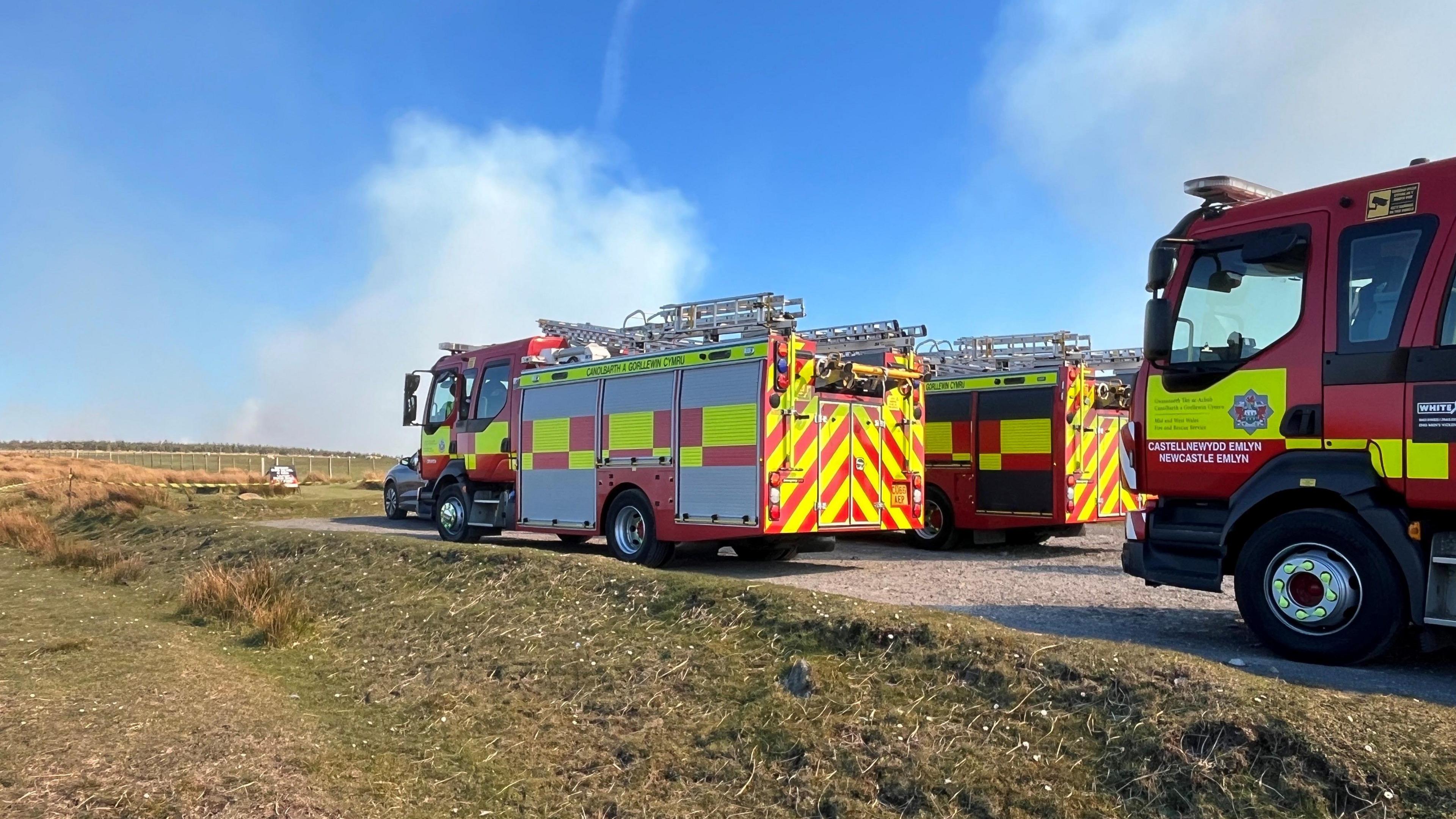
Fires crews at a gorse fire at Brynberian in Pembrokeshire
She said controlling the gorse is crucial to avoid wildfires.
"Nothing for me is more beautiful than seeing the controlled fires," she added.
But one such fire this year in the Preseli Hills, near the village of Brynberian, got out of control in high winds.
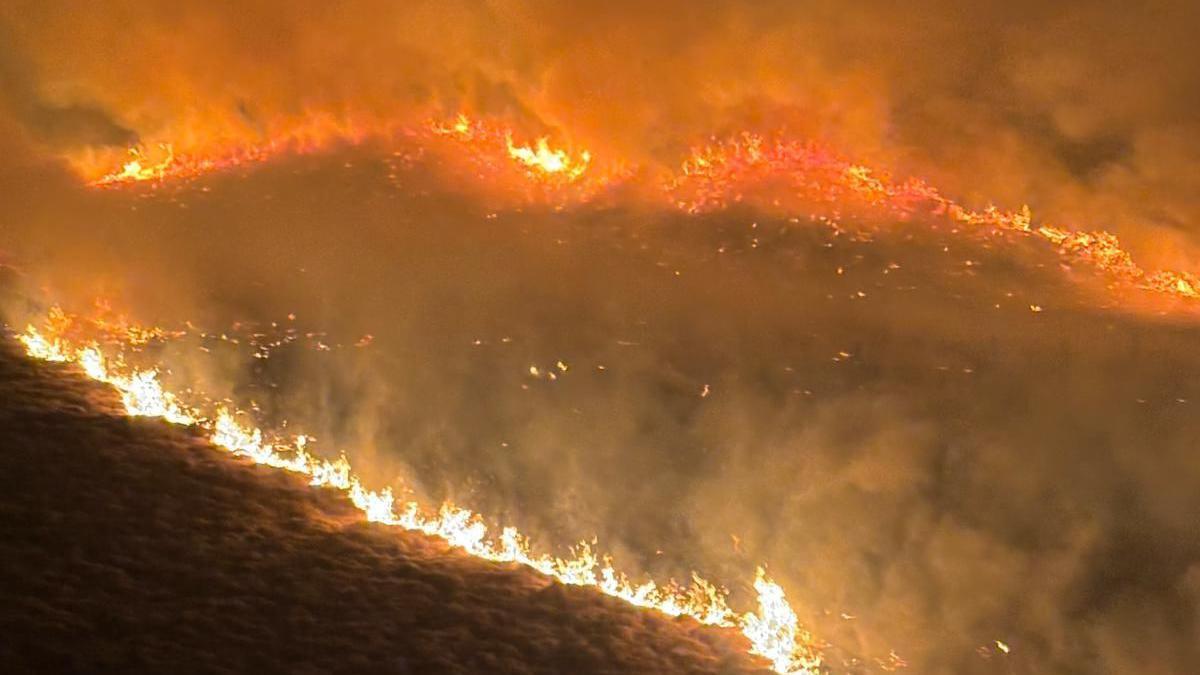
The Ffair Rhos mountain fire spread across an area the size of 3,500 football pitches this week
In the south Wales valleys most of the hills above towns like Treorchy are managed by Natural Resources Wales (NRW), not farmers.
NRW said the majority of land it manages in the area is forest plantations.
"Most of these fires begin on open ground and can quickly spread into forests, where fuel loads increase the intensity and impact of the fire," a spokesperson said.
"In the south Wales valleys, we've developed wildfire risk management plans for our high-risk areas and take practical action, such as putting in fuel breaks where vegetation is removed to slow down or stop the spread of wildfires.”

Natural Resources Wales has brought in a wildfire risk management plan for high-risk areas
NRW said climate change was a "key factor" in the increasing risk of wildfires.
"We are adapting our fire risk management to respond to this – but partnership and public support are essential," it said.
The fire services, local authorities, public services boards and community groups work to "assess and reduce wildfire risk through prevention, response, and education," NRW added.
- Published2 April
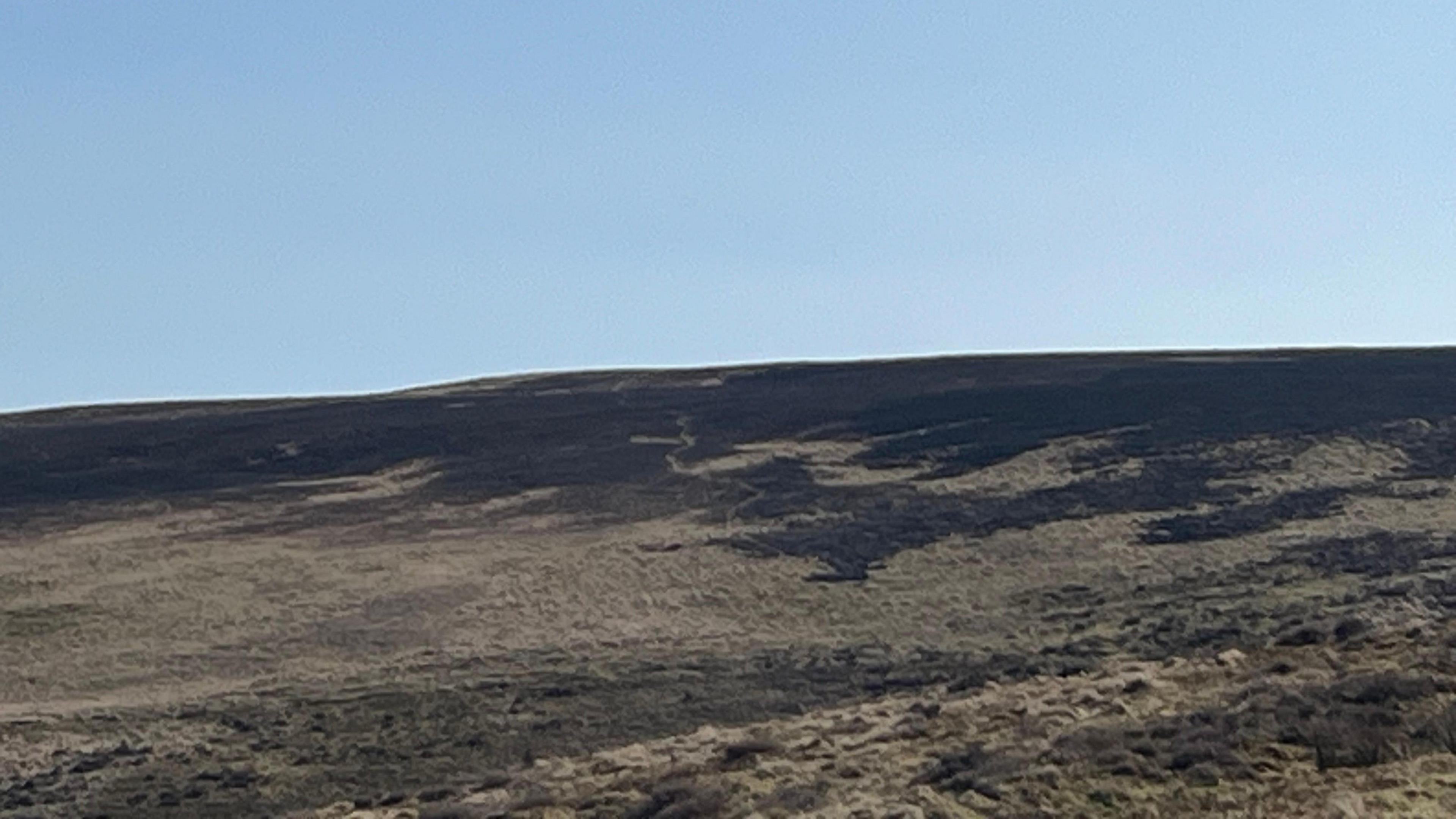
- Published13 October 2024
